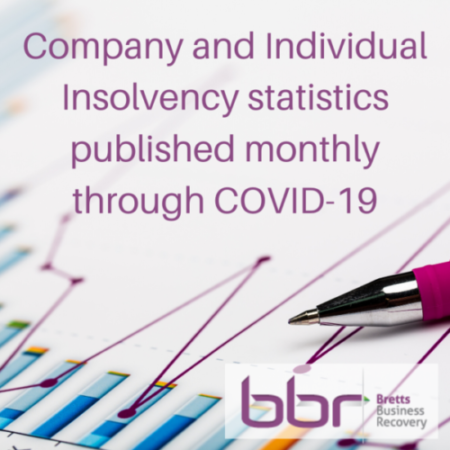Insolvency statistics released for June 2020

Latest company and individual insolvency statistics show little extraordinary variation and remain low when compared to the same month last year.
In a bid to provide faster indicators of the impact of the COVID-19 pandemic, the Insolvency Service has committed to releasing monthly company and individual insolvency statistics for England and Wales, and monthly company statistics for Scotland. The third monthly release was published on 14 July 2020.
Summary for June 2020 England and Wales
Overall numbers of company and individual insolvencies remained low in June 2020, when compared with the same month in the previous year.
This was likely to be at least partly driven by Government measures set up in response to the coronavirus (COVID 19) pandemic, including:
- Reduced court and tribunal operations and reduced HMRC enforcement activity since the UK lockdown was applied
- Temporary restrictions on the use of statutory demands and certain winding-up petitions (leading to company compulsory liquidations) from 27 April and extended to 30 September 2020 under the Corporate Insolvency and Governance Act
- Enhanced Government financial support for companies and individuals.
The exception was in volumes of individual voluntary arrangements (IVAs), where there was a 33% increase in the average number of registrations in each of the three months ending June 2020, compared with the same period last year. However, volumes of IVAs are volatile and the latest statistics were affected by an artificial increase in registered IVAs in May, as a result of technical issues experienced by an IVA provider.
As the Insolvency Service does not record whether an insolvency is directly related to the coronavirus pandemic, it is not possible to state its direct effect on insolvency volumes.
The statistics in detail – June 2020*
Image – The Insolvency Service Monthly insolvency statistics, June 2020
Company insolvencies
In June 2020, there was a total of 732 company insolvencies in England and Wales, comprised of:
- 557 creditors’ voluntary liquidations (CVLs)
- 61 compulsory liquidations
- 100 administrations
- 14 company voluntary arrangements (CVAs).
There were no receivership appointments.
The overall number of company insolvencies decreased by 50% in June 2020, when compared to the same month last year. This was primarily driven by a decrease in the numbers of CVLs and compulsory liquidations which fell by 45% and 78% respectively.
Additionally, there was a 60% decrease in the numbers of CVAs, and a 33% decrease in the numbers of companies entering administration in June 2020, compared with June 2019.
How the numbers may be affected
The reduction in company insolvencies was likely to be in part driven by the range of Government support put in place to support companies in response to the coronavirus (COVID 19) pandemic.
Debt relief orders and bankruptcies
There were 1,775 DROs in England and Wales representing a 15% reduction in June 2020, compared with the same month last year.
454 bankruptcies, made up of 431 debtor bankruptcies and 23 creditor bankruptcies, represent a 65% reduction compared with the same month last year. The reduction in bankruptcies was driven by a 58% fall in debtor bankruptcies and a 91% reduction in creditor bankruptcies.
How the numbers may be affected
The fall in DROs and debtor bankruptcies corresponds with a reduction in applications which coincided with the announcement of enhanced Government financial support for individuals and businesses.
The fall in creditor bankruptcies will likely have been a result of reduced HMRC enforcement activity during this period and in part, a result of reduced operational running of the courts.
Individual voluntary arrangements
There were 8,428 IVAs registered, on average, each month during the three months ending June 2020. This was a 33% increase when compared with the average number of registrations in each of the three months ending June 2019.
How the numbers may be affected
IVAs are counted once they are registered with the Insolvency Service and are reported by month of registration date. There can be a time lag between the date on which the IVA is accepted (the date of creditor agreement) and the date of registration by licensed insolvency practitioners. This can lead to volatility in the data from one month to the next and create difficulty in constituting reliable short-term trends.
In addition, recent statistics have been affected by technical issues experienced by an IVA provider, with approximately 4,950 IVAs registered in May 2020 that would otherwise have been registered between December 2019 and March 2020. Three-month rolling averages have been calculated to smooth the data and indicate what the overall trend of IVA registrations might look like if the underlying data were less volatile.
Advice
We’ll publish a summary of the reports here each month. For advice relating to support, insolvency or recovery options, please contact us.
* This data is taken from the Insolvency Service Statistics for June 2020, published 14 July 2020 – see the full report here: https://www.gov.uk/government/statistics/monthly-insolvency-statistics-june-2020